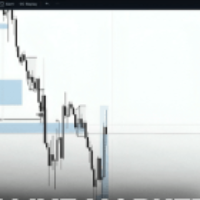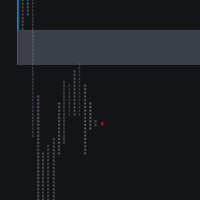Your bad trading habits are costing you money and tons of emotional capital. Unless you figure out a way to kick these habits you will not make it in this trading business.
This is where veteran Trading Psychologist Brett Steenbarger comes in. In this feature I am going to tell you who Dr. Steenbarger is and then I will lay out the seven steps that he says you need to follow to get rid of your bad trading habits.
Who Is Brett Steenbarger?
Many know him as a popular trading coach of some of the top traders in the business and the writer of the widely read book Trading Psychology which has helped a lot of traders to refine their mental approach to trading. Successful traders seek Brett Steenbarger’s help not because they’re struggling, but because they want to maintain and enhance their performance, adapting to evolving market conditions.
Steenbarger consults with various hedge funds and financial firms, exposing himself to a wide range of trading strategies and helping traders improve their performance while also aiding in hiring processes.
How To Break Bad Trading Habits
Naturally, as a Trading Coach, he knows very well that habits like taking profits too soon or cutting losses too late aren’t always purely psychological; they can also stem from not adapting to changing market conditions.
So here are the steps that he suggests traders should use to break their bad habits:
Step1: Be Aware
To break trading habits, traders must first become aware of them, then consciously redirect their behavior in real-time, substituting negative habits with positive actions.
Step 2: Know Your Weaknesses
Recognize weaknesses through experience. Cognitive overload and discomfort in certain situations can indicate areas of weakness.
Step 3: Focus On Your Strengths
Focus on strengths. Leverage strengths to excel in areas where weaknesses are not a hindrance. Acting on strengths brings intrinsic fulfillment, while going against strengths leads to frustration. Self-awareness is crucial in identifying what aligns with personal strengths.
Step 4: Form New Habits
Forming new habits is crucial in trading. Rather than relying solely on motivation, traders should focus on turning best practices into habitual actions to ensure consistent performance. Techniques like guided imagery can reprogram emotional responses and operate on a subconscious level to induce positive change.
Step 5: Set Goals
Effective goal setting requires specific plans for implementation. Goals alone are wishes without concrete plans to achieve them. Avoid placing undue emphasis on monetary goals to prevent performance anxiety. Focus on improvement and risk-adjusted returns instead of fixed monetary targets.
Step 6: Embrace Your Failures
Embrace failure as a learning opportunity. Losses provide valuable information for adaptation and improvement in trading strategies. Avoid excessive pressure by maintaining a balanced life outside of trading. Having priorities beyond trading helps weather the inevitable ups and downs in the market.
Step 7: Seek Fulfillment
Find satisfaction in trading beyond profitability. Intellectual curiosity, learning, and exploring new strategies can provide fulfillment even during challenging times.
I hope this helps to get you started on the path to developing a better psychological/mental approach to you trading. If you liked this feature you can check out the Trading Psychology booklist as well as other features on NBB’s Trading Strategy, Stockbee’s Trading Method, Blackrock’s Aladdin, A Tutorial On Market Structure, How To Trade With the BPSPX, The ICT Candle Counting Method, See What It Is Like To Make Millions As A Trader, How To Pass A Trader Evaluation & Get Funded, The Top Step Trader Review, How Your Trade Size Impacts Your Returns, ICT Liquidity Runs, How To Trade The Options Chart & The Falang Futures Algo and How To Use Volume To Trade Like Banks & Institutions






























